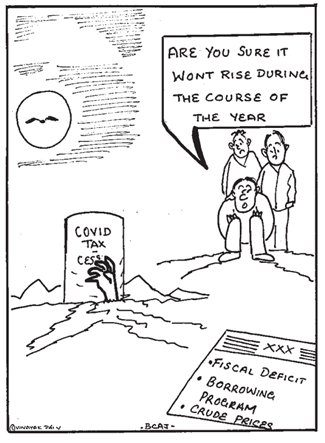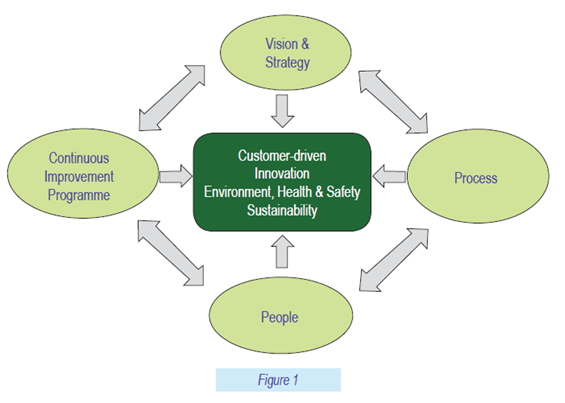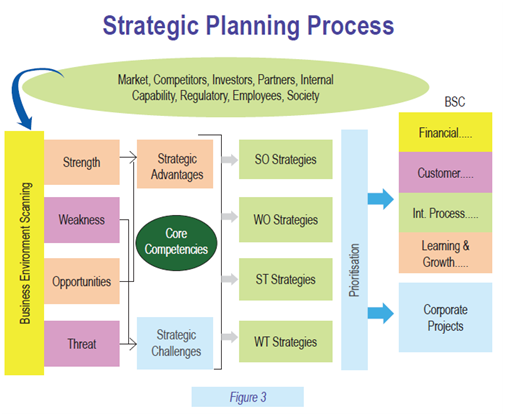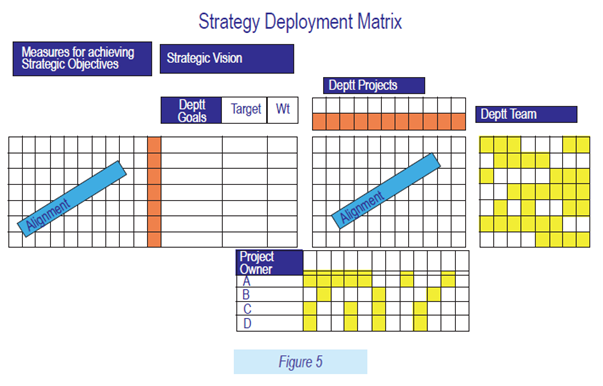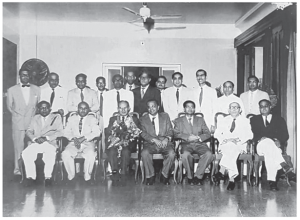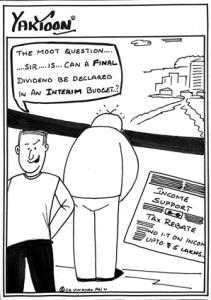Stories inspire generations, have built civilizations and adorn cultures. Stories of valour, imagination, determination, and all that the human spirit is about! As we celebrate 50 years, BCAJ thought of bringing to you such stories – stories of people from diverse backgrounds and circumstances woven together into a colourful Kaleidoscope.
The stories below are of Chartered Accountants. Some did CA and went off running in another direction, chasing their chosen dream. Some belonged to a strong family tradition and yet went ahead to do CA. Some, in spite of ‘the impossible’ staring at them, went for their dream called CA. Some climbed mountains of difficulties every day and jumped off into an orbit of a new life they aspired to lead.
A true celebration is about the Human Spirit. No wall, no resistance, not even time can stop what is bound to happen. We had to write about them in this last issue of the 50th Volume. In these stories we celebrate colours and hues, dimensions and diversity, turbulence and triumph, barriers and dreams. And that is akin to the BCAJ journey. It is said: Man never made any material as resilient as the human spirit (Bernard Williams).
Each story is a unique jewel tied to a common thread of being a proud CA. CA stands for Chartered Accountant, but these stories give it a new meaning of Can Achieve! We hope you enjoy the stories of a vegetable vendor’s son, a third-generation violinist, a rickshaw driver’s daughter topping the exam, a bomb blast victim, five generations of CAs, an illiterate farmer’s son staying in slums to chase his dream and more! That is the JOSH! Hope you enjoy these GOLDEN NUGGETS as we close the Golden Year!
DIFFICULTIES ARE MEANT TO ROUSE, NOT DISCOURAGE
She changed his life for ever
In the late 1990s, there was a man who carried vegetables in a basket on his head and went from building to building in Dadar/Matunga, hawking his wares. He came from an illiterate family and had migrated from Mhow in Uttar Pradesh. He somehow made ends meet and sent his children to the Hindi-medium municipal school near by.
When his eldest son Moti completed his Seventh standard, he had to leave – because there was no further class in that school. The boy got admitted to the Eighth class at Shri Dayanand Balak Vidyalaya, run by the Arya Samaj in Matunga. Still studying in Hindi medium, something snapped in Moti’s mind. He realised that if he wanted to rise above poverty and to live a better life, he would have to get a proper education. Rather than grumbling about the dark, he started hunting for the lamp of knowledge. He searched for the company of the more studious boys who concentrated on their books.
Where could they find the place to study at late hours after school? Believe it or not, in the “gaps between buildings”! In those days, not all buildings had compound walls and there used to be a distance of eight to ten feet (or even more) between buildings. It was in these gaps that the boys sat to study. If there was insufficient light there, they would go across to the nearby garden and sit under the streetlights. His efforts bore fruit and he passed his SSC with 85% marks.
Once this milestone had been crossed, a “Guru Maa” entered his life in the shape of Ms Sulabha Joshi, a teacher. She used to interact with the boy and his family while buying vegetables from them. When Moti told her that he had passed his SSC and wanted to pursue further studies, she took him under her wings. She lived in a bungalow in Dadar and used to give tuitions. She asked him to join her other students. She would not charge him – and, wonder of wonders, she would also teach him English and Maths.
He took admission at the nearby Ruparel College so that he would be close to home and help in the family’s vegetable business. While at college he also did a software course (it was the rage at that time). Things moved very quickly after that. He soon realised that although software was “popular”, it would not be as paying in the long run. Ms Joshi helped him make a decision. As he was good at accounts, he considered doing his CA. He joined S.S. Ganpule & Co. for his articleship and started studying very hard. He passed his Inter at the first attempt; later, due to ill health he lost a year and a half, but he cleared the CA final in 2005.
It has been rather smooth sailing after that. He has worked with several leading companies, including Sharda Worldwide Exports, Bharti Airtel and Tata Power (for eight years) and joined Ion-Exchange (India) Ltd. as Senior Manager (Taxation) in July, 2018.
As the BCAJ spoke to him, Mr. Motichand Gupta said that he is a happily married man today with two daughters and a son; he has moved into a bigger house in Sanpada and lives there with his parents.
How could a person who was facing tough challenges overcome them and emerge successful? When he was finishing school, Mr. Motichand recalled, he realised that if he wanted to improve his station in life, if he wanted himself and also his family to lead a better life, then he had to choose the right path and work hard in that direction.
He could see that the software course that he was doing at that time, even though it was the most popular and sought-after, would not prove beneficial in the long run. He felt it could turn out to be just a fad (as it happened). So right then he chose something that would be longer-lasting and would help lift him and his family and help them lead a better life.
“I could overcome my challenges because I identified my goal and pursued it despite my circumstances, despite ill health and the loss of a year and a half. Finally, I was able to succeed.” Clearly, a firm resolve, accompanied by hard work, helped him overcome all challenges and to succeed.
A THIRD GENERATION VIOLINIST CAN BE A FIRST GENERATION CA
CA is like armour for her
Imagine a little girl growing up in a house where there were only two kinds of sound, birdsong and the notes emanating from the strings of violins. Any other child (especially one of today’s generation) would have covered her ears and stomped out of the house. But this one didn’t. She went with the flow, picking up a violin when she was just three years old and, after a lot of practice and riyaaz, debuted on stage at 8 and gave her first solo performance at just 13. Nandini Shankar, a young, vivacious and outspoken violinist – is also a Chartered Accountant!
Granddaughter of the legendary Dr. N. Rajam, Padma Bhushan and India’s best-known living violinist, she is the daughter of Chemical Engineer Shankar Devraj and ace violinist Dr. Sangeeta Shankar. It goes without saying that her sister Ragini Shankar is also a violinist.
After completing high school, Nandini had to make a decision, should she pursue engineering, medicine, law or something else? At that time, sane counsel (her own, she insists!) prevailed and she decided to go for commerce. It would not take up too much of her time, she would be able to continue her riyaaz and also tour the country (and the world) with her family and other troupes.
In retrospect, it was a very good decision, she says. While studying for and passing her CA in 2016 (she passed all her CA exams at the first attempt), she was also doing her M.A. in Music at SNDT University and passed that in 2017.
But even during those days and nights of books, notes, tests, studies and exams, she seldom missed her riyaaz and was always game for performances both in India and abroad. (Ms Nandini practises Hindustani classical music associated with the Gwalior gharana.)
Soon, Nandini landed a very good job with Kotak Wealth and life seemed settled. But there was something that was gnawing at her. She was in the midst of an existential dilemma. Coincidentally, something else happened at that time – she was offered an appointment to the faculty for music production at Whistling Woods International established by film-maker Subhash Ghai (the Tata Institute of Social Sciences is associated with Whistling Woods which offers a graduate degree in music).
So, three ‘M’s came to describe her life – music, more music and money! Something had to give. Anyone else would have given up music, but Nandini chose to give up money (her profession as a CA) and devote herself to music full time, both teaching and performing.
Nandini told the BCAJ that the best important part of doing CA was that it has given her an “armour”: Now, she says, no one can ever trick her or forage off her so far as money matters are concerned. She knows her money inside out! And it is a great help to a professional like her. Too many of her ilk have been victims of conmen and tricksters. She is immersed in her music today, but what will happen some years down the line? That’s a question to which she has no answer right now.
She says: “CA is academically tougher. It is intellectually stimulating and practising it makes you wiser. Had I not been involved with music and only been a CA, I would probably have done very well because I think I have a knack of interacting with people… Just follow your passion. Find the middle path. It would help CAs if they take a break from their work and turn to the arts, go for painting, dancing, music, theatre or anything to keep their creativity alive. These are natural expressions. CAs can also enjoy the beauty of the arts.”
Since she is associated with a film-making company, would she like a “body double” that would help her to be at two places at the same time – one on the stage giving a recital; and another sitting with balance sheets, P&L statements and the like?
“No, I would love to have a ‘mind double’ so that I can pursue both my careers simultaneously!” Nandini exclaims.
THE HUMAN SPIRIT IS STRONGER THEN ANYTHING THAT CAN HAPPEN TO IT
Tearing their books into two
Almost everybody in the world of Chartered Accountancy knows that Ms Prema Jayakumar, the daughter of an autorickshaw driver in Malad, Mumbai, topped the all-India CA exams conducted by the ICAI in January, 2013. Along with her, Dhanraj, her younger brother aged just 22 then, also cleared the exam. Those with good memories will also recall that she had stood second in Bombay University’s B.Com. exam, scoring 90% marks; that she did her articleship with Kishore Seth and Company in Borivli; and that she also gave tuitions to several B.Com. students all over the city (she usually left home at 6.30 am and returned by 10.30 or 11 at night).
BCAJ spoke to her to find out some interesting details about her which not everybody knows. Soon after the brother-sister duo started studying for the CA entrance exams, they struck up a novel idea to control the cost of their education. Since the books were quite expensive, they tore them into two halves – then, while the sister studied the first half, the brother took up the second half; and then they exchanged their halves. Thus the two managed not to tax their indigent parents too much.
Prema recalls that she and the family faced a lot of hardships while they were studying but they had never complained. Their parents supported them to the best of their abilities, making several sacrifices to ensure that the children were never disheartened. (Their father, Jayakumar, now 60 years old, had come to Bombay from Tamil Nadu in the 1960s and after working in a mill for some time, started driving an autorickshaw to earn a living. Their mother also worked for some time, then started paying full attention to the CAs-to-be.)
After the announcement of the results, several companies were virtually falling over each other to offer her a job. She was keen on working at a bank (preferably at the RBI), and when Indian Bank offered her an appointment letter on the spot, with a choice to work in Mumbai or in Chennai, she gladly accepted it.
Now happily married, Prema lives with her husband in Chennai and recently gave birth to a baby boy. Her parents are back in their village in Tamil Nadu, living a happier life, far from the maddening crowd of Mumbai.
Despite agreeing to a brief chat for this piece earlier, her brother CA Dhanraj suddenly clammed up when it was time to speak. Perhaps it was stage-fright, perhaps it was nerves, or panic, but the young 28-year-old apologised.
One can see that the two siblings overcame massive adversity. And Chartered Accountancy was the result of their efforts and cause of their new life.
THERE ARE TWO WAYS OF MEETING DIFFICULTIES: YOU ALTER DIFFICULTIES, OR YOU ALTER YOURSELF TO MEET THEM
From soil to slum to Sr. GM
Most city dwellers rarely encounter a “son of the soil”. If you are one of them, Mr. Kisan Daule is the man to meet. He is a real “son of the soil” – and a chartered accountant to boot. Here is the story he told BCAJ about his journey. The eldest son of unlettered farmers from Rajuri village in Junnar taluka of Pune district, Kisan could see his parents struggle with the elements, especially the weather gods, to eke out a living and put food on the table; of course, there was no table in their mud hut. But there was a fire in his father’s belly which made him goad his eldest son to somehow get an education (“at least become a graduate,” he said).
Fate decided to lend a hand; but Kisan had to go through the toughest of times before the gods finally smiled on him. He studied at the local Marathi school but after he passed his SSC, he was totally blank. What now? Stumped, he came to Bombay where a brother (working at the CTO on a very low salary) lived with his family in a Wadala slum.
It was July when he came to Bombay and junior college admissions had closed. He was simply turned away. Then he learned about Vikas Night High School in Kannamwar Nagar, Vikhroli. The Principal saw his zeal and gave him admission, even though the first-term exams were already over. Kisan studied like a maniac. Since he was good in accounts, he did very well and passed the XIth, and then the HSC exam with 68% marks.
Kisan recalls that even though he faced enormous hardships, living in a slum, in unclean and contagious surroundings, with no facilities for studies, no peace of mind, no money, no ambition and no encouragement, there were a few people who did help him along. His brother gave him a roof, his brother-in-law gave him some financial help and even the villagers of Rajuri pooled in their resources and sent him some money.
The Principal of Vikas Night School was clearly the “hero” of his story, because he saw Kisan’s resolve and determination and showed him a direction – “go for B.Com.”, he said. The youngster did just that and joined the N.G. Acharya and D.K. Marathe College in Chembur. Although he had already passed away when the youngster passed his HSC, his father’s wish was soon fulfilled and his eldest son became a graduate.
It was then that Kisan met another benefactor, Prof. Ramesh Iyer, Accountancy Professor at the college. Prof. Iyer was impressed by his accountancy skills and suggested that he should become a chartered accountant. Kisan knew absolutely nothing about chartered accountancy. Prof. Iyer explained its salient points and told him to join articleship. So he joined A.R. Krishnan & Co. in 1990.
Kisan recalls his first day at office. He had been told to attend the telephone. Mr. Krishnan himself called from another line, whereupon the new articled clerk picked up the phone and mechanically said, “Mr. Krishnan has gone out.” Mr. Krishnan laughed out loud! After completing his CA, Kisan continued with Mr. Iyer. “My entire growth happened in those seven years (with
Mr. Iyer).”
Destiny beckoned him once again. He joined Transworld Shipping as a junior executive in February, 1998. When he left 20 years later, he did so as Senior General Manager. That, in short, is the story of the man behind K.Y. Daule & Co., Chartered Accountants.
On January 26, 1998, Kisan Daule was felicitated by his old school and the entire Rajuri village for being the first CA from among the real “sons of the soil”. Had his father been alive on that day, he says wistfully, “he would have been the happiest man alive.”
SURMOUNTING DIFFICULTIES WITH A SMILE MAKES HEROES
A continuing miracle
Few people in the community of chartered accountants in Bombay city know that over 80% of the Income-Tax Offices are differently-abled-friendly. They have ramps for wheelchairs, proper ingress and egress for them and, to top it all, they even have a separate parking area for those who drive up in special vehicles. It’s not that they have never bothered to find out, but the truth is that they always took it for granted that there were bound to be arrangements for those not as able as the rest.
As it turns out, it was a pleasant surprise even for Mr. Chirag Chauhan whose mobility is assisted by a wheelchair and who drives a vehicle specially adapted for him when he visits the IT offices whether at Bandra or at Churchgate.
It was a soothing realisation for him. But that is leapfrogging his story by more than a decade. For, it was on July 11, 2006 that he became a victim of the series of bomb blasts in the city’s local trains. Rendered a paraplegic and paralysed below the waist at the age of 21, it was a miracle that he survived. And how! Today, his life is a continuing miracle: He has his own practice in suburban Kandivli; with friends he set up the website which offers innumerable services, such as finding the nearest CA, CS, lawyer, finance or any other professional; answering queries related to taxation, company formation and other needs. This site guides visitors to more than 4,000 CAs and has over 26,000 visitors. Mr. Chirag’s website hosts scores of articles, several of them written by him and neatly and systematically archived.
Interestingly, he recalls that one of his first articles, “How to save tax”, had received more than 35 lakh hits (that’s 3.5 million!) and, in a way, opened his eyes to the immense potential of the internet.
After the blast that has come to redefine his life, he had to struggle hard with his own body which would not heed his commands. But thanks to a loving mother, a devoted sister, a persevering physiotherapist and doctors and friends who would not let him wallow in self-pity (“Why me?” he often asked himself), Mr. Chirag completed his CA. He was with A.J. Shah & Co. at the time of the blast and fondly remembers Ms Nandita Parikh, the first women CA rank-holder in India, who encouraged him to resume his studies.
But that was easier said than done. It took two long years of painful rehabilitation (physical as well as psychological) for him to finally get back to his books. He had already cleared the first two exams (PE1 and PE2). Goaded on by those close to him, he decided to go for self-study and then appeared for the PE3 exam. He passed in the first attempt and became a CA in 2009. And then his life changed once again.
He worked with a CA firm for six months but the daily journey by autorickshaw from Kandivli to Chembur was a dampener, especially during the monsoons. A job switch saw him joining internal audit at Kotak Mahindra Bank. He soon adjusted to his discomforts and, before long, bought a car; he drove all the way to Lonavala, reassessed his abilities and came back convinced that he could live a life quite close to that of anyone else. But… there was a certain restlessness. So he quit his job and started his own practice. He remembers first client – the local newspaper vendor. That man is still his client and he helped spread the word around. His practice started to flourish and today, he says, “I am normal… my work-life balance is perfect.” Touché!
Chirag is active on all social media platforms. He has met the Prime Minister of the country and has over 8,000 followers. But one of the best things about him is that he has an infectious (and sometimes mischievous!) smile.
CAN CA BE PART OF DNA?
Five Generations and Eleven CAs!
Mr. Brij Mohan Chaturvedi, a leading CA practising in Bombay, belongs to a family that boasts of not two or three but full five generations in the same profession. This sounds too good to be true, so he pulls out a chart, complete with names and photographs, and explains the relationship between the generations.
The eldest, the late Bishambar Nath Chaturvedi, was the man who started the trend. He hailed from a family of Sanskrit scholars and was one of the first men from Mathura to do his graduation in English. He became a registered accountant in 1925 after working as an apprentice under one Irani & Co., an audit firm in Delhi. His two sons, the late Amar Nath and Dina Nath, also became CAs. In the third generation, the late Amar Nath’s three sons, Brij Mohan, the late Madan Mohan and Subodh, followed suit. Another of Bishambar Nath’s grandsons (his daughter’s son), Srikant, also became a CA.
In the fourth generation, the late Madan Mohan’s sons, Apurva and Rishabh, did not let down the team and passed their CA. One more CA in the fourth generation came in the shape of Tina Pankaj Chaturvedi (she is the daughter of the late Amar Nath’s daughter).
Finally, the latest. Mohini Gagan Chaturvedi, Mr. Brij Mohan Chaturvedi’s daughter’s daughter, passed her CA final in November, 2017, thus becoming the fifth generation of the Chaturvedi family to take up the profession. Thus, a total of 11 members from the Chaturvedi family are CAs.
No one forced the Chaturvedi boys and girls to do their CA. It just so happened that since the patriarch of the family and his sons were all CAs, the women of the household could see the benefits that the profession brought and came to believe that anyone who did their CA would be assured of a comfortable and respectable life.
As simple as that. Few women of the first and the second generation were well-read, most of them having studied only up to middle school, but they were suffused with great native wisdom. They didn’t want the youngsters to go astray. They would mockingly gnash their teeth and tell the children, “Study! Learn something! Then you will be able to occupy the chair of your father, otherwise you won’t even become office boys!”
Sitting in his plush office at Nariman Point in Bombay today, Mr. Brij Mohan Chaturvedi is proud that his family owns the world record of having five generations in the same profession. This is a record that he claims for himself as a right; it has not been officially conferred by any organisation. He has approached the people handling the Guinness Book of World Records but is yet to receive any certificate from them. Nor has he received any official recognition from the American Institute of CPAs, or the Institute of Chartered Accountants of England or Wales; nor, for the matter of that, from the Institute of Chartered Accountants of India. Almost all of them appear to be prevaricating, claiming that they don’t keep records of their members by way of family trees.
However, that doesn’t deter Mr. Chaturvedi in any way. The cheerful and ebullient gentleman appears incredulous about the fact that he belongs to such an illustrious family and is happy that the Indian media has been kind to him. The claim to fame of his family has been splashed in several newspapers and he is thankful for the coverage as he awaits the official world recognition that he believes is due to his family.
Post Script: Mr. Brij Mohan Chaturvedi claims that although his grandfather, the late Bishambar Nath Chaturvedi, has eleven direct descendants in the profession, at least nine of the children of his brothers and sisters (grandsons, great granddaughters and great grandsons) have also qualified as chartered accountants. That makes a total of 20 chartered accountants in one family.
NOT HAPPY WITH BEING A CA, HE WENT ON TO WIN A NATIONAL AWARD FOR PLAYING THE MAHATMA
Roller-coaster ride for this CA
Life has been a roller-coaster ride for Mr. Darshan Jariwala who has donned many hats during an illustrious career in theatre, films and television. Aged 60 today, he recalls that he bowed before the typical middle-class family’s “goal” to get a good education that would stand him in good stead.
Ironically, he got the CA degree but it seems to have got him neither bread nor butter. Instead, it was his acting prowess that saw him going places and earning some money for jam! He won the 2007 National Award for Best Supporting Actor for playing the Mahatma in the film Gandhi, My Father (2007). Apart from the Mahatma, he also played the eponymous role in Narsinh Mehta, a hugely successful Gujarati television serial. That made him one of the most successful Gujarati actors. Roles in films, on television and the stage chased him and he could pick and choose. He also acted in English films, TV serials and plays.
Born in 1958 into a family with artistic leanings (his mother also did theatre and worked for All India Radio; her brother was the celebrated film star, the late Sanjeev Kumar), he worked in theatre till 1976.
He became a CA in 1983-84 and then branched into financial services and even started practising; simultaneously, he was studying for the company secretary (CS) exam, but never appeared for the final. Along the way, he had a brush with the National Stock Exchange, too.
“But then I realised that I was not cut out for these things. My dalliance with acting was still going on, but it was only as late as in 1998 that I took the decision to concentrate on acting and not to do anything else.” What the world of chartered accountancy lost, the acting world gained.
Actually, he admits, he had burnt his fingers with the other pursuits that he had followed till 1998. The challenge was to resume earning and restore his financial well-being. God was kind to him. Thankfully, work had always been abundant because of his constant association with theatre. And those who valued quality came to him and offered him roles. “It was left to me to make the choice. It has been a good journey since the last twenty years or so.”
Darshanbhai believes that being a CA he is able to approach problems in a more analytical manner and is able to identify the right perspective to tackle them. “I do believe that certain of my faculties have been sharpened because of my doing chartered accountancy… Unfortunately, I never failed. If I had been an academic dud, maybe I would have been happier and a more credible actor than I am right now!” After he gave up all other work to concentrate on acting, he became financially comfortable and had no occasion to regret the shift.
Returning to the world of chartered accountancy, he makes a perspicacious statement when he says that, earlier, CAs were supposed to be watchdogs and not bloodhounds. But now the responsibilities of CAs so far as compliance was concerned had increased manifold. “I have always struggled with that particular credo, ‘certifying the true and fair view’. I think when you talk of fair sense, your personal set of ethics does come into the picture… You have to make the choice, are you going to stick to your charter of probity and maybe starve, or…?”
As Vice-President of the Cine Artistes’ Association (the actor’s union), he points out that many of its members receive their payments only 90 to 115 days after shooting. But in the meanwhile they are supposed to pay (professional) service tax as well as GST soon after raising their bills. They have to make these payments out of their pockets, pending receipt from the respective producers.
“We have started a movement to contact each production house and make them realise that payment has to be made within the GST deadline period. We don’t want to go out of pocket… We are asking producers to pay at least 25% of the invoice value in the first 30 days and the rest in the usual course. They (producers) have also to think about the fate of the technicians. We are willing to listen to their problems, because their broadcasters have to pay them… Perhaps we can do it in a tripartite manner.
“I am actively promoting information about personal tax returns, the Income-Tax Act and so on for our members; information on how to save tax, plan tax… obtain insurance. We have to take care of everything. We are doing workshops on these subjects.”
Darshanbhai says he will wholeheartedly welcome the assistance of the Bombay Chartered Accountants’ Society in organising such workshops.
FROM A BAREFOOT UNDERGRADUATE, TO M.COM., TO CA, TO PH.D., TO TRIATHLON – AND IT’S STILL NOT OVER YET!
We are told Dr. Ravindra Khairnar brought bad luck to the family the day he was born. His father suffered a grievous injury in both hands and virtually lost their use. His father’s brother continued with the family’s small tailoring shop. They lived in a dilapidated house in a poor neighbourhood. Between them, the two brothers had eight children: six daughters and two sons. Feeding all those mouths was not easy.
With his father unable to work, his mother joined Khandesh Mills as a labourer. To make things worse, Ravi’s father often went AWOL. He would disappear for weeks; when he did return, he was of no help in running the household. Ravi had to drop out of school after completing his Fourth standard.
Next to the family’s tailoring shop was a typing class whose owner often asked the little boy to run errands for him. Sometimes, he was asked to mind the shop. The boy fiddled with the typewriters to pass the time. A few years later, someone advised him to appear for the SSC examination externally. He went for it. And after a lot of effort he managed to pass. At the same time, he worked in the tailoring shop for 12 to 14 hours to supplement the family’s income.
And then the first miracle in his life occurred. When Ravi joined high school for the 12th Standard, he wore chappals for the first time in his life. He had been barefoot all his life. He still had little time for his studies. Working the pedal of the sewing machine resulted in his legs getting swollen. But he continued working and studying and finally completed his graduation.
That little typing class next door had both English and Marathi typewriters. Ravi learnt typing on his own and also a bit of stenography. In 1986, immediately after graduation, he got a temporary job as a steno-typist for two years in United Western Bank. But the tailoring continued. Simultaneously, he started preparing for his M.Com. (externally).
That was when the second miracle occurred. He secured the 2nd rank in the M.Com. exam of Pune University in 1988. He was still working at the tailoring shop, enduring the pain in his legs.
By now he was a steno-typist and joined the office of M.V. Joshi, a chartered accountant who shared his office with Mr Desai who was an eminent lawyer in Jalgaon. The lawyer had a great flair for drafting in English and Ravi was always ready with his pencil and notebook. It is another matter that Mr Desai was short-tempered. But that turned into a blessing because although he was scolded even for a minor spelling mistake, it polished Ravi’s English.
Then he learned about a cousin who lived in a slum area in Mulund, Bombay, with his sister. The brother-sister duo had lost their parents in early childhood. The brother had done his CA but one day he suddenly passed away. A relative (who also lived in Mulund) met Ravi at a family function in Jalgaon and suggested that he should try and do his CA.
The young Ravi was sceptical at first. But he saw reason and joined M.V. Joshi, CA, as an articled clerk on a stipend of Rs. 400 (more than the mandatory Rs. 150 per month). He gave up the bank job but did not stop working at the tailoring shop. Mr Joshi encouraged him to appear before the Income Tax authorities for scrutiny and other proceedings. This exposure gave him a lot of confidence.
Ravi could never afford reference books for his studies. He relied only on the study material at the Institute. Many articled trainees in Jalgaon used to attend coaching classes in Pune. But this young man could not do so. His evenings were spent in the tailoring shop.
And then the third miracle occurred, albeit in a round-about way, thanks to his tailoring skill. The family shop was the only one in Jalgaon that stitched coats. Several rich, well-to-do people were among its clients. One of them was a certain Mr Barve who was well connected in influential circles. He observed Ravindra’s struggles and saw how difficult it was for him to study in his dilapidated house.
To aggravate matters, Ravindra was married before his final CA exam and even had a baby girl. Mr Barve invited him to stay in his house at Pune for a month before the exams. Soon, this became a regular feature; he would go to Pune and stay there for a month before the group exam. Incidentally, he had never had even a cup of tea in a hotel before passing his CA! There was just no question of eating outside. He would carry provisions and cook for himself. But he cleared all the groups of intermediate and final CA without failing even once.
What after CA? His principal and benefactor, Mr Joshi, offered him assignments of charitable trusts, schools, etc., which were far from remunerative (such assignments are not remunerative even today!). But Ravindra was thrilled and started his “office” below the staircase of an old chawl in Jalgaon.
Today, miracle number four, Ravindra has a two-storeyed office of his own.
Despite the odds, he has got all his sisters and brother married. The greatest pleasure in his life is that he could build a good house and own a small piece of agricultural land where his parents spend their old age happily. Ravindra also likes farming and his parents are completely contented looking at the achievements of their son Ravindra.
All good stories should end at this point. But that’s not the case with Ravindra Khairnar.
In 2016, he earned a doctorate in taxation from North Maharashtra University, Jalgaon. His Ph.D. thesis is titled, “A study of Public Trusts in Jalgaon District with special reference to Finance and Operations”.
If that was miracle number five, here is the next one.
A well-know social and political leader, Mrs. Pratibha Patil, and her husband were popular figures in Jalgaon. She was a Member of Parliament and he a businessman. Whenever any dignitaries came visiting, they would call Ravindra to lend a helping hand. They had a lot of affection for him.
This was when the sixth miracle occurred. The Patils’ CA was becoming too old to handle work. On learning that Ravindra had already started practising as a CA, they handed over all their work to him.
When Mrs. Pratibha Patil became the President of India, Ravindra took the Western India Regional Council members to meet her. A photograph taken on the occasion appeared on the cover page of the CA journal that month.
But the story continues. And so do the miracles.
Ravindra had developed varicose veins because of his constant work on the sewing machine. As soon as he could, he underwent surgery to alleviate the pain. And then he turned to athletics!
Recently, he completed 9 marathons and the triathlon. In this, participants have to run 21 kilometres, cycle 90 kilometres and swim 2 kilometres in quick succession. Ravindra completed the feat in Hyderabad recently. He is now eyeing the Olympics in the veterans’ category (50 to 60 years). But that is some time away. At present, he has set his sights on representing India in the annual Ironman World Championship organised by the World Triathlon Corporation at Hawaii.
When he completes that championship, that will be miracle number seven. And, Ravindra says, he will then be on seventh heaven.
He is married with a son and two daughters. The elder one, who is doing her CA, is married to a CA
from Thane. But despite all the miracles he has wrought, Ravindra Khairnar still remains a humble, unassuming and low-profile man, always willing to help others.
Kaleidoscopic inputs provided by Ramesh Iyer, Raman Jokhakar, Sanjeev Pandit, Anmol Purohit, Mihir Sheth and C.N. Vaze.














